Installing AVoIP Systems Today Affords Future Expansion Possibilities
As adoption rates for AV over IP increase, the professional AV community has the chance to grow along with it.
Having watched the AV-over-IP landscape expand over the past few years, it’s easy for integrators to understand the growing capabilities of AVoIP systems, but it’s been satisfying to see end users realize what these systems can do, according to Jim Mauger, senior systems designer at integration firm Spinitar.
“I get excited to see the end user’s perspective shift when they see a system finally up and running,” he said. “You can do a lot to explain it, to sell them on the pluses of doing it this way, but when they can see the convenience of it? How flexible things can be? It’s cool to see their eyes open when they realize how much capability they have, which is something they may not have quite realized at the concept stage.”
Ben Dandola-Grubb, assistant vice president of engineering services at integration firm Verrex, has seen an increase in AVoIP adoption, which has provided more choices in available technology as well as more opportunities for projects that integrate them. “There’s been more attention across the board, whether it’s manufacturers developing their products or clients interested in all the marketing, or us as integrators just wanting to be involved in working with AV over IP,” he said.

Potential for Growth
Though the technology has been improving, making for faster, more efficient systems, there’s still room to grow. According to a recent AVoIP market analysis by Futuresource Consulting, 10G solutions are still struggling to gain traction, with 1G installations continuing to make up the majority of projects. But we’re getting there.
1Gb vs. 10Gb Ethernet: Which is right for your AV network?
“The products, and really the whole concept—it’s certainly grown a good bit,” Mauger said. “It pretty much started out with one company breaking the ice, so to speak, and now all of a sudden we’ve got lots of choices. Competition in the industry has helped a lot from a design standpoint. My bag of tricks now has different products for different situations.”
Charles Dobson, director of development at the SDVoE Alliance, agrees that the options have improved and it's easier than ever to embrace IT innovations for AV applications. “Network-based AV signal distribution offers more design choices at the outset and greater flexibility to adapt and grow with client needs over the life of the system,” he said. “Added to this is the superior value end users derive from investments in standards-based infrastructure compared to classic proprietary AV systems.”
A daily selection of features, industry news, and analysis for AV/IT professionals. Sign up below.
Still, he pointed to a bigger issue that needs to be resolved before AVoIP systems are as useful as they can be for both integrators and end users: the “hodgepodge of solutions based on a wide range of competing technologies.” SDVoE is working to standardize the adoption of Ethernet to transport AV signals in professional AV environments, but it’s a work in progress.
“Nearly all of these are proprietary or proprietary implementations,” Dobson said. “This means that products from vendor A do not talk to those from vendor B or C. This is inefficient for the industry and confusing for customers. The SDVoE Alliance, of course, is here to help foster this development and establish a common, standards-based approach to AV over IP.”
At the end of the day, though things have improved to make it much easier to design AVoIP systems, that doesn’t always mean it’s the right solution for every install.
What's the status of the AV over IP transition?
“We’re still by no means putting AV over IP in every room—far from it—but it gives us flexibility for future expansions, future growth,” he said. “But I don’t want a client to waste money. It’s still really important that you sit down at the beginning and figure out their needs.”
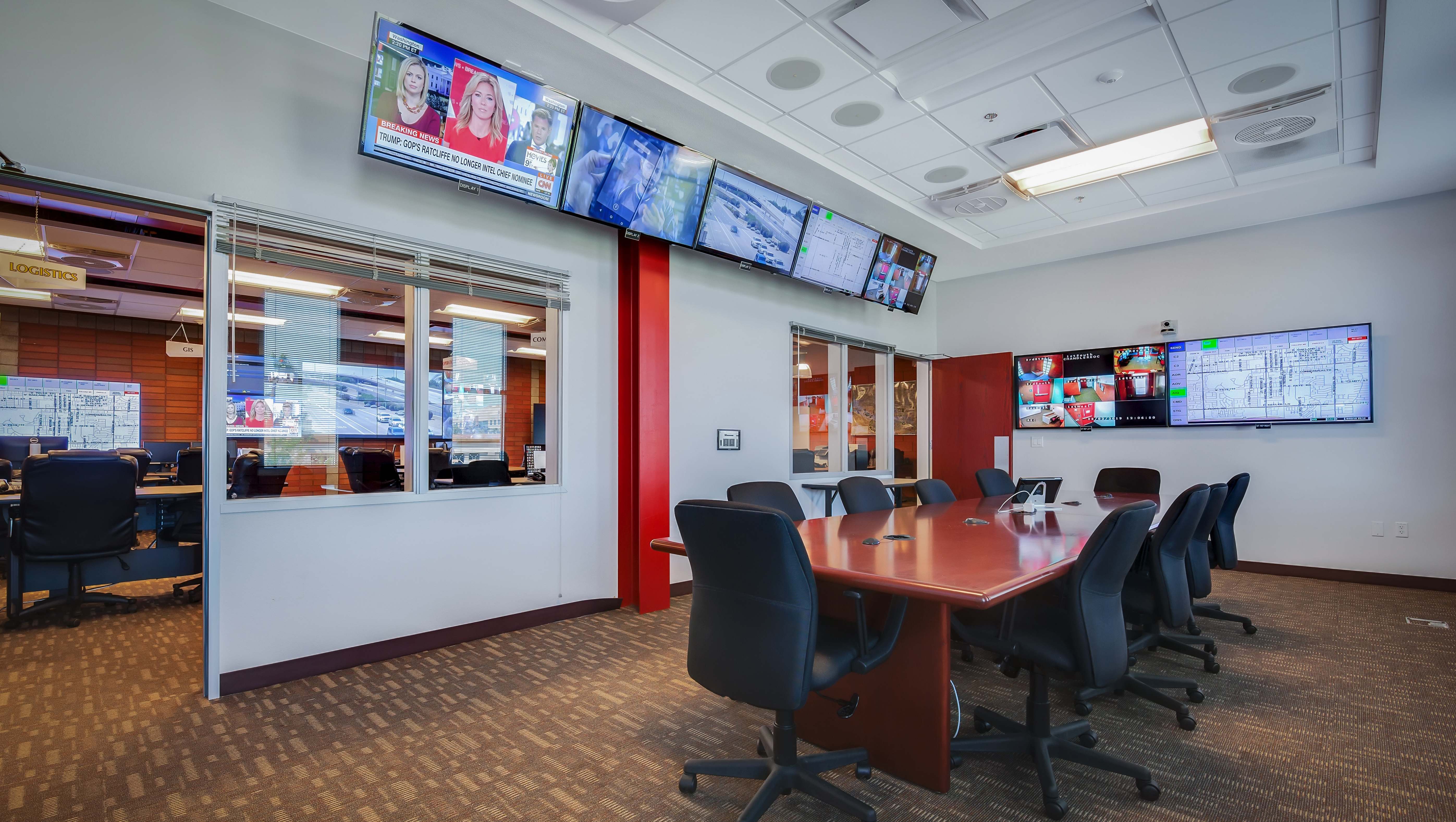
Working with IT
Time has improved the technologies and evolved the process of working with client-side IT staff. As these projects become more common, IT is becoming familiar with network requirements and what an integration team will expect from them. Still, there can be some friction. Dandola-Grubb stresses that communication that starts early is key to a good working relationship with IT staff who may be involved in the project.
“We’ve been trying to get in contact with the IT folks as early as possible, and maintain that contact throughout the process,” he said. “Most IT folks know what they’re doing and know what they’re talking about, but sometimes it’s difficult gaining access to them early enough in the process.”
Mauger agreed, noting that one of the biggest challenges in a project is simply deciding where to put things. “Are the end users or their IT or network folks ready, willing, and able to embrace it?” he said. “For us, that’s been improving quite a bit lately. The IT folks are definitely embracing more and more.”
AV and IT must collaborate for successful IP network convergence
Providing IT staff with a basic document that outlines what the project will require from the network and how you plan to configure things can go a long way in communicating needs and getting ahead of any questions that may arise, Dandola-Grubb said. “They still may ignore it until the last minute, but at the very least we can say, ‘Hey, look guys, we talked about this.’ We tried. And that’s tremendously helpful.”
Dobson agreed that clear and early communication between integrator and IT staff is important, but said that part of that relationship being successful is also up to the manufacturers. “Manufacturers need to be designing products and solutions that are good network citizens, meaning that they look and feel like typical interoperable, manageable, and secure devices.”
The basics of AV over IP infrastructure
The Road Ahead
As adoption rates for AVoIP increase, the professional AV community has the chance to grow along with it, noted Dandola-Grubb.
IP network convergence requires that AV pros gain IT networking skills
“I like to think of it as an opportunity for us all to learn something new,” he said, noting that Verrex has assembled a suggested list of training opportunities for staff to explore, which is particularly useful now, as technicians have less opportunity to work in the field. “AV over IP is where we’re going, and we’ve been heading this way for a long time.”
Of course, it’s important to remember that what the future looks like is as much up to the integrators as it is to the manufacturers and end users.
“You could say that this is the end of the beginning, that the benefits of making the move to the network are clear, and that signature deployments have shown that a solution can meet and even surpass expectations,” Dobson said. “The next phase will see an explosion of creativity as designers and their customers really start to define the kind of workflows these systems make possible. Google, Alexa, and Siri are telling us all loud and clear: Everyone wants more content, more control, and more automation. It’s up to us to bring it to them.”
New AV over IP Products

RGB Spectrum Zio W4000
The Zio W4000 video wall processor supports both baseband video sources (HDMI, DisplayPort, SDI) and AV-over-IP video sources (H.264) to deliver the best of both worlds for in-room and enterprise-wide video distribution. The W4000 simplifies complex visualization by simultaneously displaying multiple high-quality video sources on any size video wall with up to 64 displays. The Zio W4000 supports both video and web content.
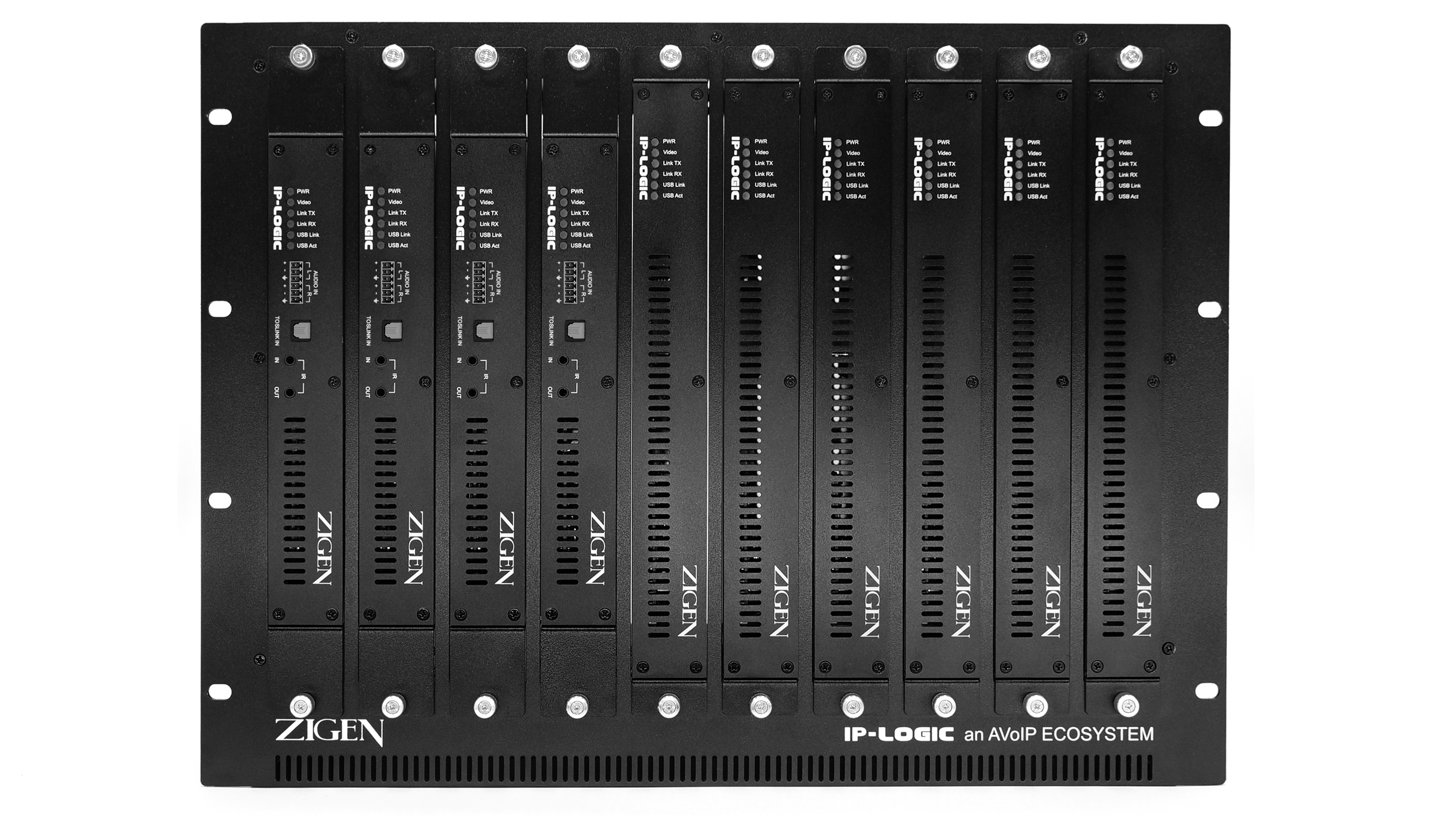
Zigen IP-Logic
Zigen’s AVoIP platform, IP-Logic, allows audio (AES67) and video (SDVoE) to be distributed on the same managed switch—traditionally, it is required to segregate AES67 and SDVoE on separate network switches. Zigen has eliminated the need for additional switches, audio bridges, and other proprietary products to increase the customer value proposition. Zigen says its AVoIP platform stands above the competition and that, with IP-Logic, the possibilities are endless.

Xilica Solaro QR1
Xilica’s Solaro QR1 is a modular DSP that offers discreet, low-profile applications for networked AV/IT environments in a quarter-width frame. According to Xilica, the Solaro QR1 offers exceptional audio quality, along with outstanding performance through a dual-core Linux backbone. Its modular design provides integrators with flexible options, allowing customers to buy the frame, choose the appropriate cards, and configure to exacting specifications. Users can later reconfigure the QR1 with field-swappable cards to serve changing needs.

Christie Terra Controller, Available Through Synnex
The Christie Terra Controller provides reliable, highly secure operational control and management of SDVoE systems in mission-critical environments. Its intuitive web-based programming interface makes the Terra Controller easy to learn and use, simplifying the installation, configuration, programming, management, and operational tasks of SDVoE systems. With an expanding lineup of processing and control hardware and software, Christie Terra solutions include everything required to design and integrate complete SDVoE systems.
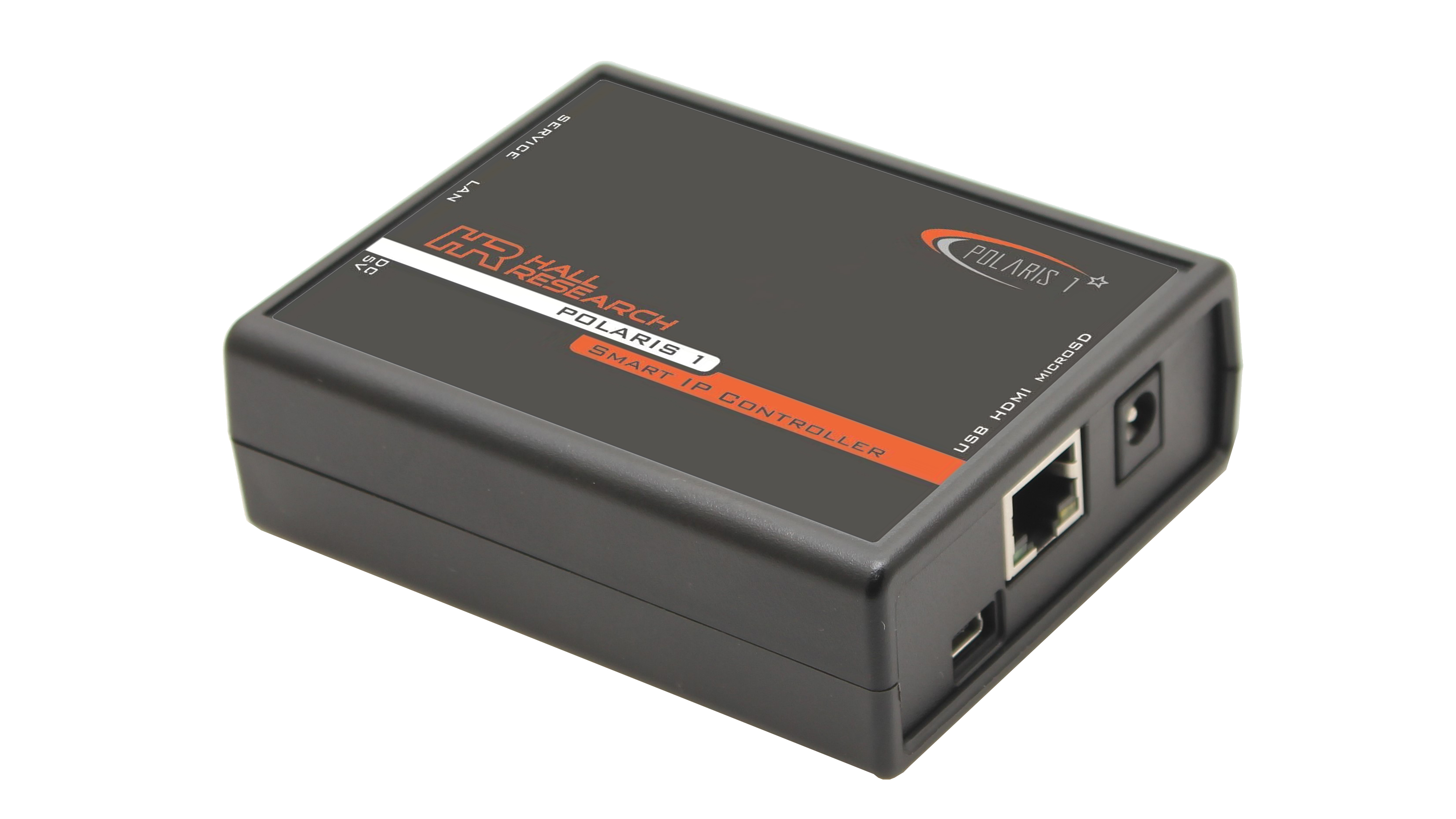
Hall Research Polaris-1
The Hall Research Polaris-1 is a powerful IP controller with internal web servers to support up to 32 users simultaneously. Designed for GUI control of large AVoIP installations, it enables administrators to create various zones/rooms and assign displays to each zone. Display names and video source are programmable. Layouts or maps can be uploaded to aid users in identifying the location of displays in each zone, and the controller can be accessed from any smart device.
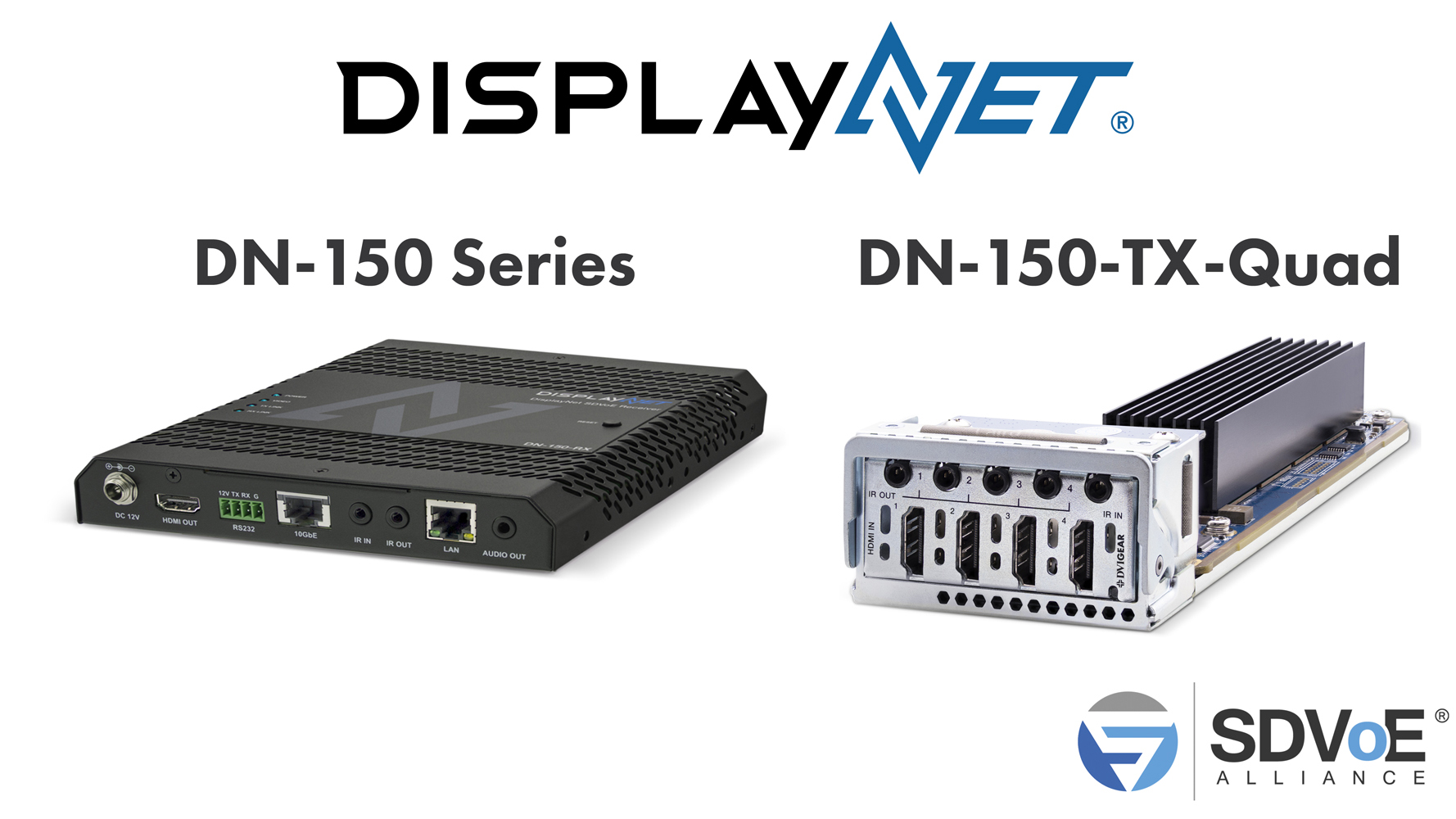
DVIGear DN-150 Series
The DN-150 Series represents the best value in SDVoE matrix switching products, according to DVIGear. These units provide support for HDMI 4K/60 signals at 8-bit (4:4:4) and 10-bit (4:2:2) with zero frame latency and zero loss in signal quality. DN-150 Series endpoints utilize ultra-compact fanless enclosures. DN-150-TX-Quad is a plug-in module for the Netgear M4300-96X network switch that offers four HDMI input ports at half of the cost of four dedicated DN-150-TX units.
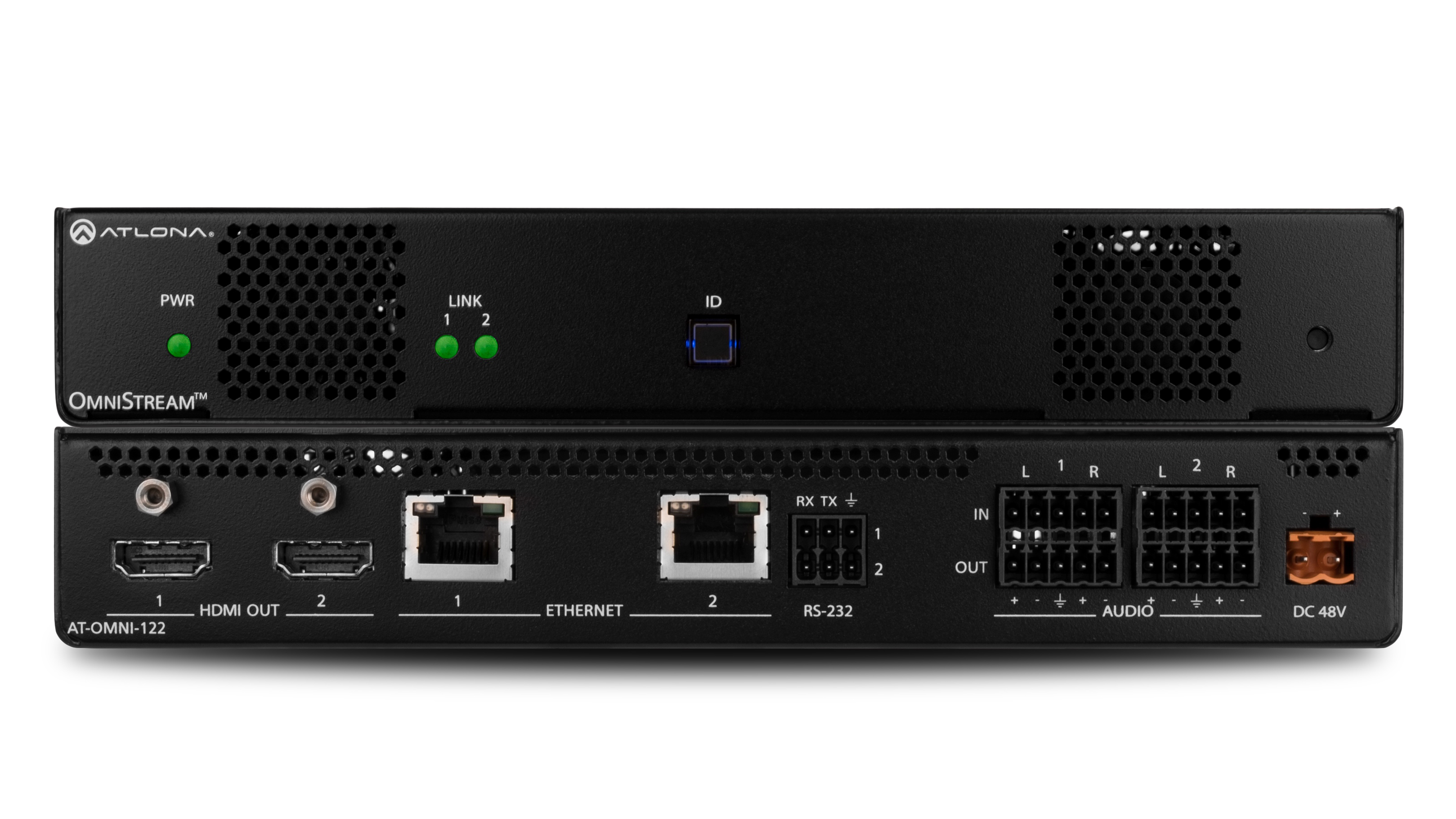
Atlona AT-OMNI-122
Atlona’s AT-OMNI-122 (OmniStream 122) is a dual-channel networked decoder within the OmniStream Pro AV-over-IP family. OmniStream 122 processes two channels in a single, half-width rack enclosure, offering cost-efficient, high-density integration. Operational benefits include enterprise-level/campus-wide scalability, built-in security and network error resilience, and broadcast-quality 4K performance with visually lossless compression. OmniStream 122 also maximizes uptime with automatic failover and recovery when deployed in redundant configurations, and in alignment with IT systems and best practices.

Black Box MCX
MCX is Black Box’s next-generation AV-over-IP solution that distributes 4K 60Hz video and audio over IP. It is designed for modern 10G network infrastructures. This robust video distribution system delivers the video quality high-end AV applications require to display eye-catching content. MCX eliminates any compromise between low latency, low bandwidth, and high video quality, as well as the need to maintain dual networks to support AV and IT data independently across the enterprise.
